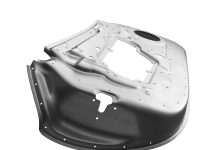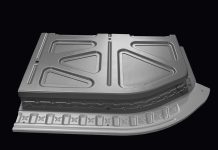The Numisheet Conference series debuted in 1991 (Zurich), focusing on challenges to, and advancements in, the numerical modeling of sheet metal forming processes: material behavior, forming processes, forming tools, and tribology, as well as material testing and characterization. Held on a three year cadence, barring 2016 and 2018, the most recent COVID-postponed event took place in Toronto this past July. Although more sparsely attended than past events due to lingering COVID concerns and restrictions, the twelfth edition conference was a refreshing opportunity for this dedicated and growing community of academics and industrial adherents to gather and exchange notes, and look for trends in the work underway at far flung research and industrial hubs.
Major conference themes included:
- Numerical treatment of advanced constitutive models
- Modeling of sheet metal forming processes
- Mechanics of sheet metal forming processes
- Failure modeling
- Treatment of tribology / friction
While these topics appear conventional, relevant leading research is currently motivated by lightweighting, safety, and electrification: challenges that have become pillars of a nascent ideology for the global automotive industry. While new and advanced material grades are being explored, multi-scale and crystal plasticity approaches along with AI and machine learning methods are increasingly applied to material characterization and the modeling of material behavior during sheet metal forming processes. All to expand the spectrum of application and enhance the accuracy of digital engineering and simulation tools. Understanding and characterizing material failure behavior is another clear focus.
The AutoForm Pareto Principle, reintroduced by Dr. Bart Carleer (Technical Director – AutoForm Engineering GmbH) in his plenary lecture titled “An Effective Way to a Digital Process Model”, provides useful context for the research and development work presented at this conference, with relevance to the accuracy of simulation outcomes:
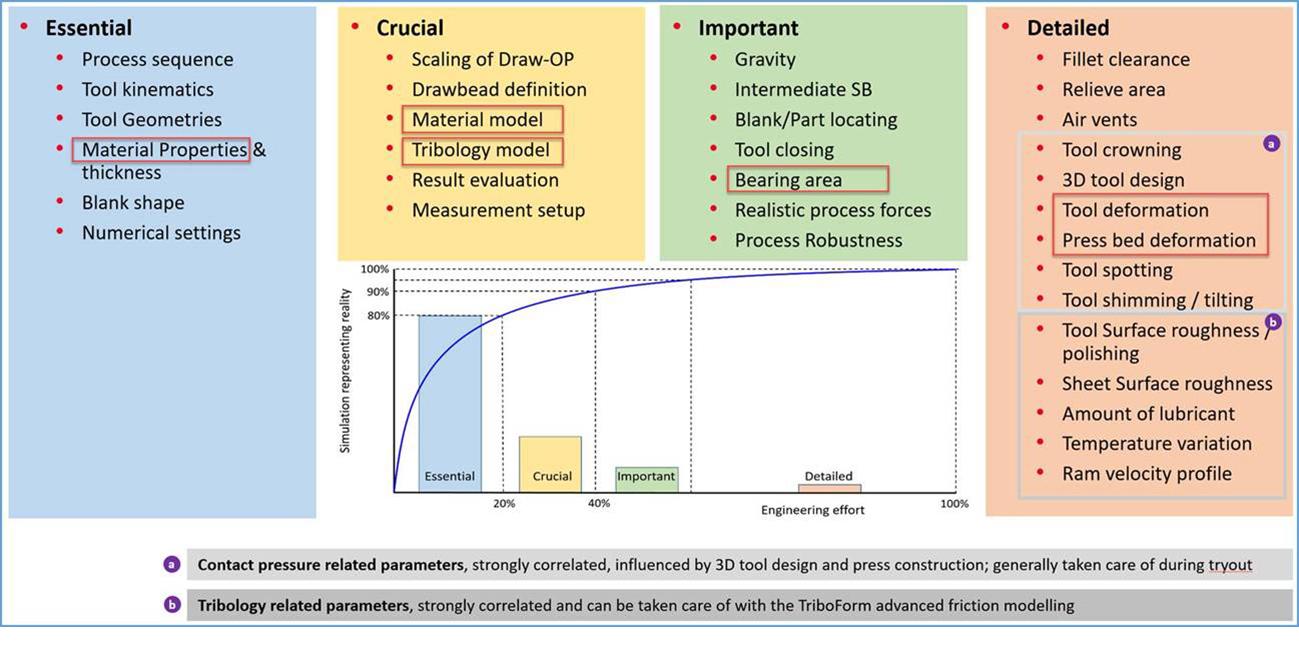
Topics covered at this year’s Numisheet Conference are outlined in red. Accurate simulation outcomes involving new and advanced material grades necessitates an understanding of their material properties. It is encouraging to note the effort towards tribological modeling, a crucial contributor to simulation accuracy. The research focus and investment towards some of the “detailed” topics highlighted points to their growing importance.
Now for a sampling of interesting topics / items…
Crystal plasticity methods and simulations:
Sheet material behavior during stamping is directly, although complicatedly, related to the material’s microstructure: the arrangement of its atoms into grains, the “phases” that develop depending on chemistry, size, and shape of these phases, etc.
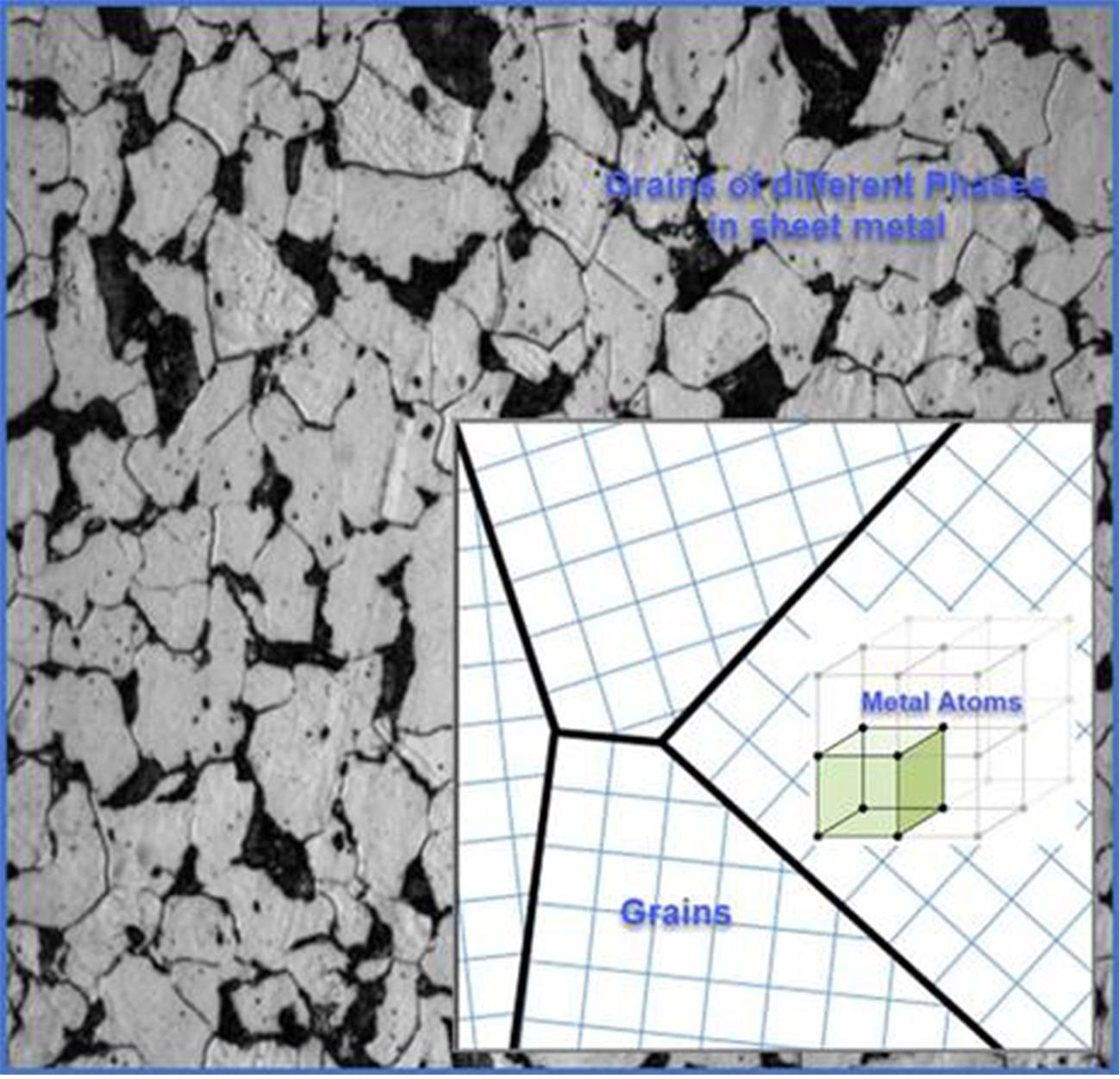
Common industry practice is to ignore all these “microscale” features, treat the sheet metal as a monolithic material, and run mechanical tests to characterize the material for simulation. This characterization is therefore a “macroscale” representation. A number of mechanical tests are required for accurate characterization: tensile, bulge, FLC testing, etc. Crystal plasticity methods, on the other hand, attempt to predict macroscale mechanical behavior from microstructural, or “microscale”, properties of the material. Microstructural characterization is carried out using scanning electron microscopy (SEM) and related techniques. These methods are certainly not new, yet have not reached the point of viability for commercial applications. But they do have the potential for a more representative characterization of material behavior, and therefore improved accuracy of simulation outcomes. Here are a couple of interesting and promising predictions of material properties presented at the conference:
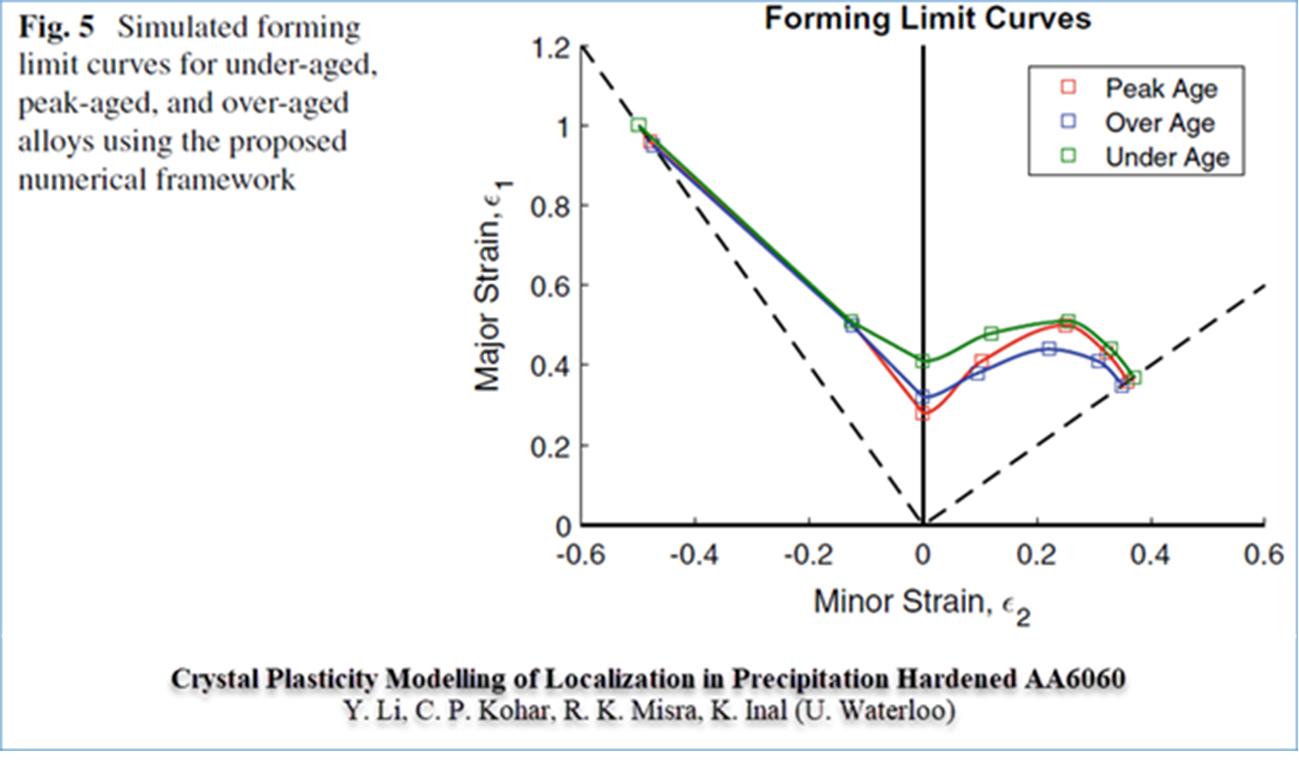
FLCs for a 6000 series aluminum under different tempers, and (below) R-values of a DP600 steel along different orientations to the rolling direction.

Influence of tool and press deflection on simulation outcomes:
There is increasing recognition of the importance of this topic, particularly springback, which different approaches are being explored and matured to manage.
KIA Motor, with support from AutoForm and MIDAS IT, showcased a method of computing structural deflections based on contact stresses generated upon the forming tool surfaces from forming simulation. Computed deflections are then layered on top of the compensation surfaces generated from forming analysis prior to the release of surface machining data.
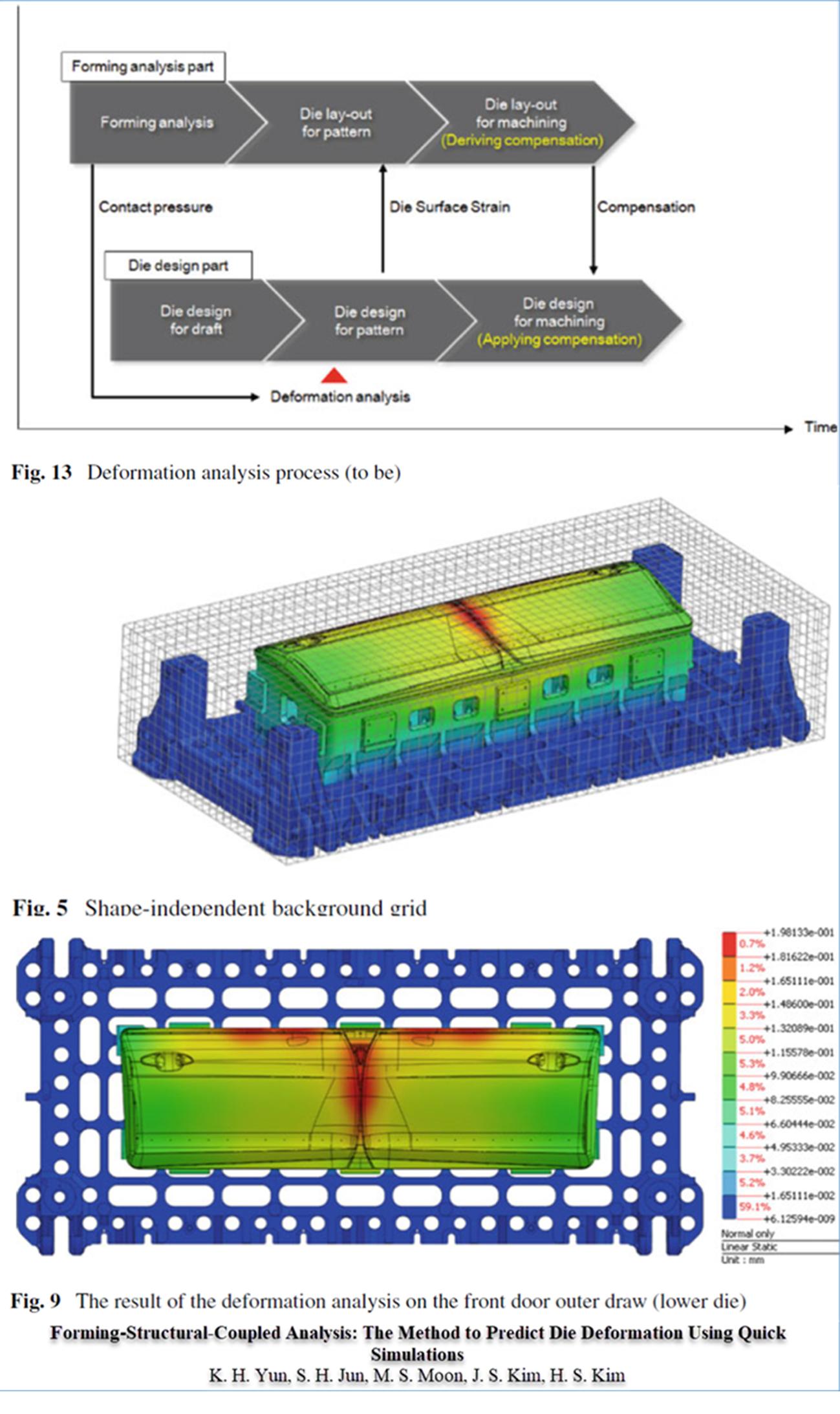
Stay tuned for more. We will soon deliver a post covering our presented topic at Numisheet 2022, featuring our R&D Plugin and how it’s being used for research investigations. In the meantime, you may want to read our post where we reviewed the Numisheet benchmark results, “Quantifiably Faster & More Accurate: But How Much Faster?”







